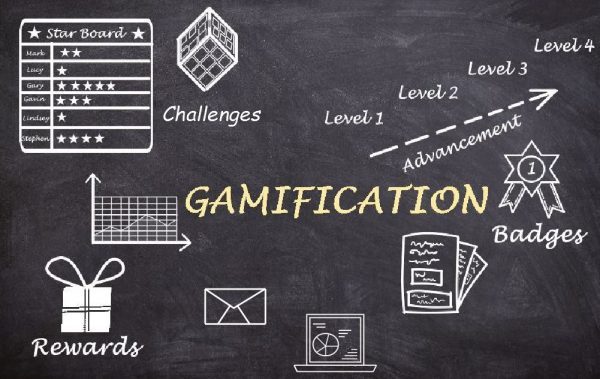In Week One, we focused on creating an environment conducive to learning and getting to know our students as much as possible. With the self-assessments/pre-assessments and activities described in Week One, we are now transitioning to our lesson design with our students’ knowledge, identities, abilities, and needs in mind. This week’s discussion prompted us to identify the content standard(s) within the content area we wish to teach for this week-long learning map. We were also tasked with identifying a VPA standard and an additional content standard to align with. We built on these standards for this assignment to identify our learning outcomes (Week Two LO 2) and begin designing our instructional activities (Week Two LO 1). This plan will leverage various digital tools and learning technologies (TPE 4.8) that promote access to the curriculum (TPE 1.7), and the plan itself will reflect the interconnectedness of our content area with others (TPE 4.3).
CalTPA Alignment
As we moved through the questions, we noticed that many questions in this assignment are similar to those asked during Cycle 1 of the CalTPA Template C, in which we will need to provide an adequate rationale for our lesson plan. We used this as an opportunity to familiarize ourselves with the CalTPA process and expectations and bring the full attention to detail required for successful lesson planning.
Building on 526
In ITL526, we learned to unpack a standard, define mastery with a corresponding rubric to evaluate student progress and achievement of that standard, and create assignments and assessments that were aligned, accessible, and equitable for all students. We were expected to apply all the concepts we learned during that course in this longer week-long plan. It’s the same thing but over a broader period, integrating the VPA and other content areas.
Context
As we completed this assignment, we were to plan it based on our actual (or potential) school schedule. If we teach in a traditional schedule with students attending five days a week, then our week-long plan is five days. If we teach in a rolling or modified block, this would be a 3-day plan. We were to plan based on the actual minutes we teach. If we were not currently teaching, we could choose from either a 5-day, 50-minute traditional scheduled class or a 3-day, 90-minute block. We could have, if we wanted to, added an additional day (block) or two (traditional) to our plan. This assignment is less about the time frame and more about the alignment and integration.
In this assignment, we identified learning outcomes and planned the instructional activities. In Week Three, we will create the actual assessments, and in Week Four, we will create one of the instructional lessons with an informal assessment. We were expected to look ahead to see how those will integrate with this plan.
Looking Ahead
Week Three
In Week Three, we will create a summative assessment that must come in the form of a Choice Board (see Week Three Assignment for creation details). Depending on the depth of work our students are doing for this summative assessment, much of the week could be working toward this. We only needed to identify where and how the choice board would be implemented for this Week Two Assignment. Next week, we will create the choice board and the summative assessments, but if it is integral to the days of this plan, we will need to identify what students are doing and when in this assignment.
Week Four
For the Signature Assignment, we will use digital tools to record a screencast lesson with an embedded informal assessment or end formative assessment. We will create this in Week Four, but our plan this week must consider when this will occur.
Instructions
Resources
We were to review the following resources before we began our assignment, as they informed our work. We were also encouraged to review the recommended resources in the Week Two Resources section and the ITL526 content resources to add to our knowledge and understanding of course concepts and real-world practices.
Read
- Empowering Students with Voice and Choice
- This lesson plan aims to promote multiple means of representation and engagement, but student empowerment and student-centered strategies will take engagement to the next level. This resource includes articles and videos on how to shift to increasing student empowerment, instructional strategies for increasing student choice, student-centered projects and strategies, and more. It helped develop our instruction.
- 100 remote learning activities, templates and tutorials
- This is a one-stop shop for ideas for graphic organizer templates, digital tools, instructional strategies, projects, interactive lessons, and more. These resources naturally weave VPA and other content areas and gave many ideas for our lesson design.
- Resources on content-specific instructional strategies in the library guide.
- We navigated the Library Guide to see resources related to strong instructional strategies within our specific content area. We were to cite one of these sources as a strategy we implemented somewhere in our week-long plan.
- Content Standards
- We read the content standards to identify the standards within and outside the content area we wish to teach in our week-long lesson series.
- Visual and Performing Arts Content Standards for California Public Schools
- We read through the content standards to identify the appropriate grade-level standard with which we could overlap in our week-long lesson series.
- Arts Integration and Universal Design for Learning: Explore the powerful alignment between arts integration and the three principles that guide Universal Design for Learning (UDL)
- We learned how arts integration naturally creates opportunities for UDL in action. This article helped us consider using VPA standards to incorporate UDL principles into lesson planning.
- 3 Reasons Why Your ELLs Need Arts Integration
- The arts are essential for ELL students because art is a universal language that expresses culture and experiments with identity. This article helped us understand how integrating the arts will support our goal of creating an inclusive learning environment and provided some resources and ideas we used for our instruction.
- Articles on VPA strategies aligned with our content area in the library guide.
- These resources will give us context and understanding of integrating our content area with the visual and performing arts and/or other content areas.
Watch
- This video [8:31] provides an overview of how and why to integrate arts into content areas, with examples and ideas given. Closed captions are available.
We were to use the Week Two Assignment Template to create a map of our week-long plan. We needed to cite at least one of the sources in the Library Guide as a strategy we are implementing somewhere in your week-long plan. Our plan required the following:
- Standards: We had to identify our content standard(s), VPA standard, and additional content standard we were focusing on.
- Learning Objectives: For our week-long plan, we had to identify one or two learning objectives that reflect mastery of the content standard(s) observed. We did not need to identify mastery for the other standards outside our content area.
- Lesson Plan Rationale:
- Prior Academic Knowledge: We needed to explain how the lesson plan builds on students’ prior academic knowledge related to the daily and week-long learning objectives.
- Student Assets and Learning Needs: We needed to explain how the lesson plan incorporates, affirms, and validates students’ cultural and linguistic resources, socioeconomic backgrounds, funds of knowledge, prior experiences, and interests related to the lesson content. We needed to describe how we would use the pre-assessment data from our Week One assignment to inform these decisions.
- Daily Plan: For each instructional day, er needed to include:
- Daily Learning Objective or Outcome: The daily learning objective should be for that day only and incrementally build and support the process toward our bigger week-long learning objective.
- Overview of Each Day: We needed to summarize what we and the students will do in bulleted form or narrative. We needed to identify where and when to implement instruction, self-assessments, formative assessments, summative assessments, UDL principles, digital tools, strategies, and interdisciplinary activities.
- Instructional Strategies: We needed to compose a plan to utilize specific instructional strategies, including UDL and content-specific strategies, and describe what adaptations we might make to improve student access to learning. We needed to describe how we would support student engagement with the content we were teaching in this lesson (e.g., modeling, scaffolding, asking questions, providing instructions to guide an activity). VPA and additional content areas must be explicitly identified and referenced to the day plans’ instructional strategies, tools, and/or assessments.
- Academic Language Development: We needed to explain how we would address the academic language development needs of the students we were teaching, including English learners and Standard English learners. What vocabulary or terminology is necessary to access the content?
Assessments: We needed to explain how we would use informal and formative assessments throughout the week to check students’ understanding of the content taught and how we would use that data to inform our next steps. - Focus Students: We needed to formulate a description of how the lesson plan addresses the individual assets and learning needs of the three focus students, including, as appropriate, assistive technologies, and provides inclusive learning opportunities (if relevant, may include an explanation of additional support that occurs outside the classroom) to engage fully with the content of the lesson, including English language development. These could have been our own focus students, or we could have used those provided in the Student Profiles.
- For Focus Student 1, we were to explain how the lesson plan supports progress toward their ELD goal(s).



